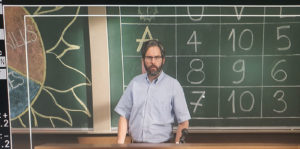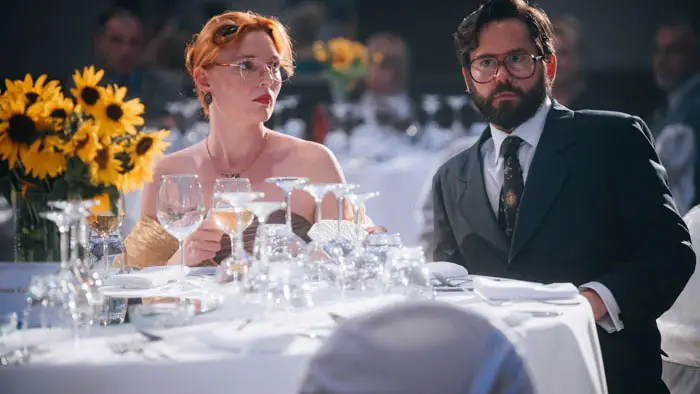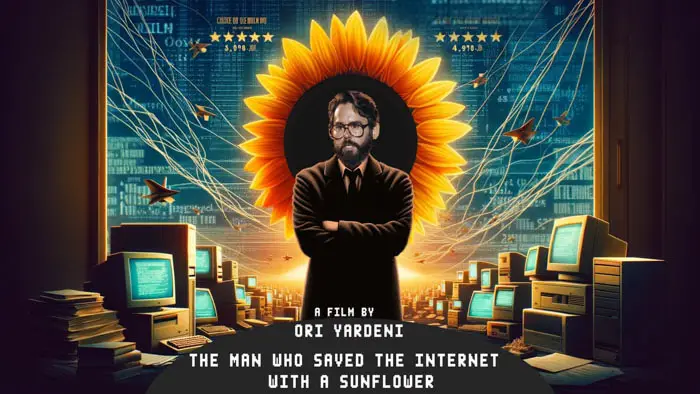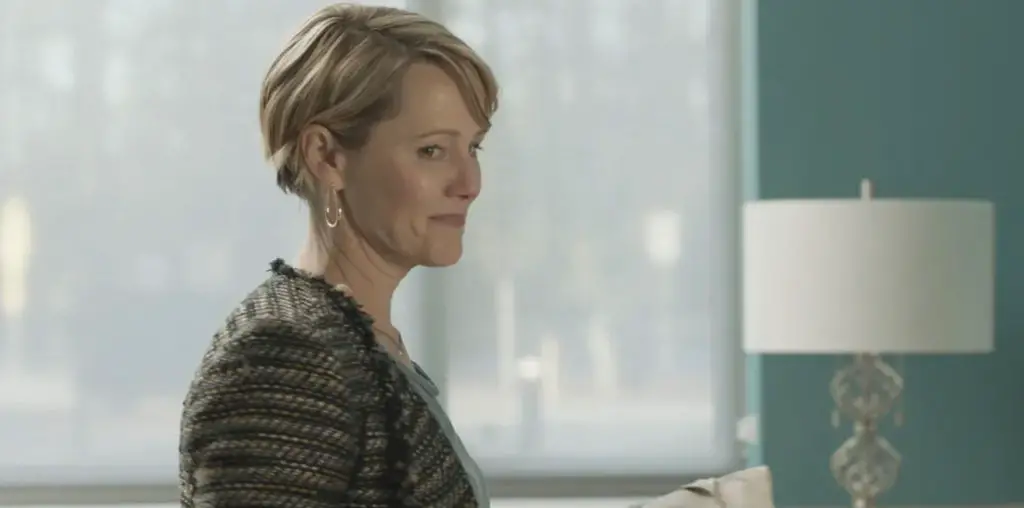
The Man Who Saved the Internet with a Sunflower may have a larger-than-life title, but it is that big and unusual a story. Based on the true and relatively unknown life of Rob Ryan (Martin Delaney), director Ori Yardeni presents the first film of his trilogy, introducing the life of Rob Ryan as the brain trust and executor of saving the Internet from collapse in the 1990s.
In 1983, Rob and his wife, Terry (Leo Hatton), are a young couple surviving in Silicon Valley. Terry is an attorney whose direct insistence on Rob’s ability is the pathway for his invention and productivity. Leo Hatton is a believable character with great acting chops and is well-suited for this role. Never giving up on Rob, which many would have due to his irascible behavior and bizarre relationship with his team members, Mark (Troy Hewitt), Rick (Michael Curran-Dorsano), and especially Stacy (Sophie Hopkins), Terry holds Rob together.
Although a great character in this historical rendition of the tech world and its evolution, Stacy comes with issues that still need to be understood. Was there an affair with Rob, maybe only mental? Perhaps we will learn more in the following two films to come. Mark and Rick fit a typecast of tech inner circle brain power in all great stories about tech wizards and their evolution.
Knowing the outcome of The Man Who Saved the Internet with a Sunflower and all the predictions Rob makes for his investors and the company that backed him, the Internet changed the planet and everyone’s life. However, getting there is a rough road as Rob was the mind behind how the physical pieces were put in place to make this happen—not an easy process and one that was difficult to sell, mainly because of his investor’s and board members’ at Ascend Communications could not grasp the knowledge. Yet, Yardeni goes deeper than the scientist against suits.

“…introducing the life of Rob Ryan as the brain trust and executor of saving the Internet from collapse in the 1990s.”
Known as a difficult person, Rob must go the extra mile to understand what it would take for those grasping Internet knowledge, the science that will keep it humming through the centuries, and the ability to grow and expand. A look to nature, the key to our existence, is where Rob unlocks the power of success, which happens to be a sunflower and the creation of The Sunflower Code. In the end, he receives a significant award and is recognized by his peers, which he never believed would happen.
Although The Sunflower Code takes this biopic down a road of the business of self-help and discovery, which changes the film’s dramatic premise altogether, it does shed light on the future, which is supposedly the following two films on today’s Internet and, of course, AI. The film ends on an interesting note, which provides an open door for the next film, where people need to rise against those who should be held accountable for using the Internet for bullying and abuse—it’s a good foray into the here and now.
The Man Who Saved the Internet with a Sunflower may not have known actors and has the feel of a paid advertising campaign for The Sunflower Code. Still, it was informative and interesting, especially in rooting for the underdog and never giving up no matter how many doors slam in your face. In addition, the attention to detail in creating the 1980s and 1990s tech environment was notable, from computers and dot matrix printouts to roll-down car door windows as well as all the possibilities of the Internet that were just an idea then and exist now from conference abilities and porn to shopping, streaming, and home delivery.
The Man Who Saved the Internet with a Sunflower is well-made and directed, covering a great deal of ground, which is understandable and easy to grasp. Although this follows the underlying sales pitch of the film, visiting The Man Who Saved the Internet with a Sunflower website, themanwhosavedtheinternet.com, serves inquiry minds.

"…Rob unlocks the power of success, which happens to be a sunflower..."


